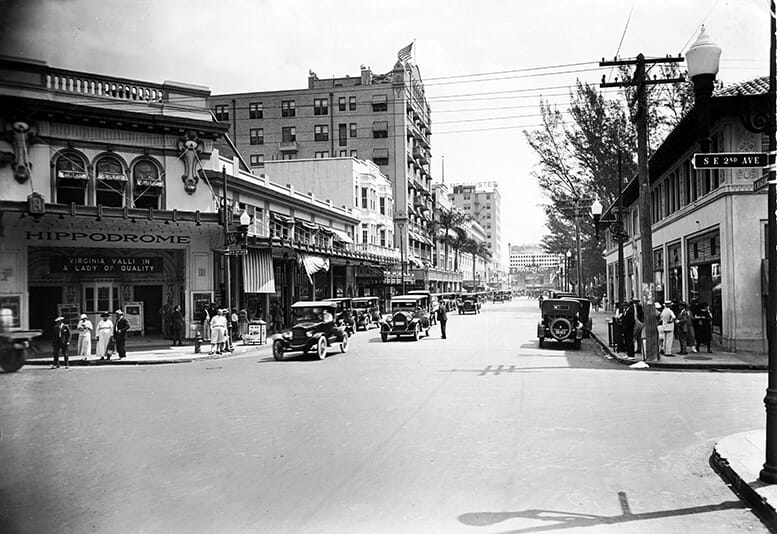
Cover: Looking east on Flagler Street from S.E. 2nd Avenue in February of 1924. The sign at the end of the street was on top of Elser Pier. The Hippodrome Theater and office building was built on the site of Dr. James M. Jackson’s home. On the right is the Tatum Brothers real estate office.
When the Miami Woman’s Club leadership got approval by the Model Land Company, the FEC’s property management firm, to sell the land once deeded for the exclusive use as a clubhouse and library, it didn’t take long to find a buyer. Four brothers, who moved to Miami in the early 1900s from Georgia, were managing a vibrant real estate firm called the Tatum Brothers Inc. The organization was responsible for developing parts of North Miami Beach, the Riverside neighborhood, and several neighborhoods in South Dade County, as well as many other projects around South Florida.
When the Tatum brothers purchased the former Woman’s Club and Public Library building, they planned on redeveloping the property and razing the existing structure, then construct a 12 – 15 story building in its place. However, given how busy they were managing their real estate business during the peak years of the building boom, the Tatum brothers chose to just renovate the existing building with a plan to replace it at a later date.
However, the real estate bust that began in 1926 changed the plans for many in Miami, including the Tatum Brothers. By 1932, the building’s signature tenant was no longer the real estate firm, but a dress shop called Estelles. The retailer operated out of what was still referred to as the Tatum Building until 1936 when Walgreens purchased the property for what would become their largest store in their chain of pharmacies around the country.
Click on the play button below to watch a narrated video on the history of the Tatum Building on at 200 East Flagler Street from 1923 – 1936.
Click Here to Subscribe
Related Content:
Resources:
- Images courtesy of HistoryMiami Museum, Miami Daily News, and the Miami-Dade Public Library, Romer Collection.
- Introduction music was ‘The Pharmacist from Walgreens’ by Gregg Turner.
